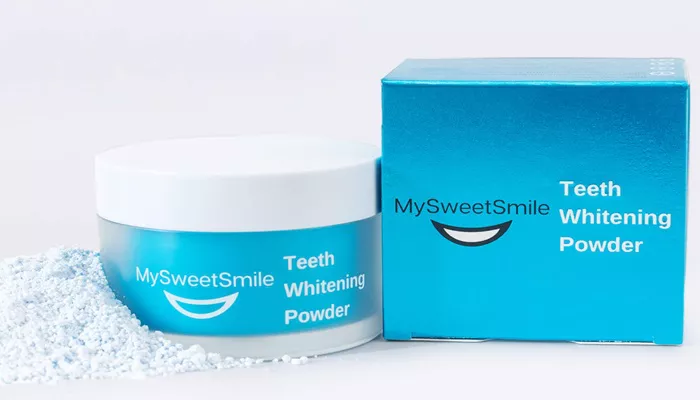Baking powder, often confused with baking soda, is a common household ingredient sometimes used for teeth cleaning. However, it is important to understand how to clean teeth with baking powder safely and effectively. This article explains the detailed process, benefits, and risks associated with using baking powder in oral care. We will also discuss connections to cosmetic dentistry and dental health issues such as pericoronitis.
What Is Baking Powder and How Is It Different from Baking Soda?
Baking powder is a mixture of baking soda (sodium bicarbonate), an acidifying agent, and a drying agent. It is primarily used as a leavening agent in baking. Baking soda alone is commonly recommended for teeth cleaning because it is mildly abrasive and helps neutralize acids.
Using baking powder on teeth is less common and requires caution due to its acid content. This difference matters when considering the safety of your tooth enamel and gums.
How Baking Powder Works on Teeth
Baking powder contains sodium bicarbonate which can help remove surface stains and neutralize acids produced by bacteria in the mouth. This action can reduce plaque buildup and brighten teeth slightly.
However, the acid components in baking powder can irritate gums and weaken enamel if misused. Understanding the chemical properties helps avoid damage during teeth cleaning.
Step-by-Step Guide: How to Clean Teeth with Baking Powder
Step 1: Prepare a Safe Baking Powder Paste
Mix a small amount (about half a teaspoon) of baking powder with enough water to make a thick paste. Avoid using too much powder or acidic liquids like vinegar, as this may harm your teeth.
Step 2: Use a Soft-Bristled Toothbrush
Apply the paste to a soft toothbrush. Brushing gently prevents enamel abrasion and protects sensitive areas, especially near the gums and around teeth affected by conditions like pericoronitis.
Step 3: Brush Teeth Gently
Brush for 1-2 minutes, focusing on stained or plaque-prone areas. Avoid vigorous scrubbing to prevent gum irritation and enamel erosion.
Step 4: Rinse Thoroughly
Rinse your mouth well with water to remove all residue. Residual baking powder can cause dryness or irritation if left in the mouth.
Step 5: Follow Up with Regular Toothpaste
Brush again with fluoride toothpaste to protect enamel and support overall oral health. This step is essential as baking powder does not provide fluoride, which strengthens teeth.
Benefits of Cleaning Teeth with Baking Powder
Surface Stain Removal
Baking powder’s mild abrasiveness helps remove surface stains caused by coffee, tea, and smoking. This effect can improve the appearance of teeth without harsh chemicals.
Neutralizing Oral Acids
Its alkaline nature helps neutralize acids in the mouth. Acid control reduces the risk of enamel erosion and supports healthier gums, reducing the chance of developing issues like pericoronitis.
Cost-Effective and Accessible
Baking powder is inexpensive and widely available. This makes it an attractive option for people seeking natural, affordable oral care methods.
Risks and Precautions When Using Baking Powder on Teeth
Enamel Erosion
Excessive use or aggressive brushing with baking powder can wear down enamel. Enamel protects teeth from decay and sensitivity, so preserving it is crucial.
Gum Irritation
The acid in baking powder may irritate gums, especially if you already have inflammation or conditions like pericoronitis. Avoid using baking powder if you experience gum pain or bleeding.
Not a Substitute for Professional Dental Care
Cleaning teeth with baking powder should not replace regular dental checkups or treatments in cosmetic dentistry. Professional cleanings and whitening provide safer, more effective results.
Comparing Baking Powder with Other Natural Teeth Cleaning Methods
Baking Soda
Baking soda is generally preferred over baking powder for teeth cleaning due to its milder effect and absence of added acids.
Oil Pulling
Swishing oil like coconut oil can reduce bacteria and plaque. It is gentle and safe but less effective at removing stains than abrasive powders.
Activated Charcoal
Charcoal powder absorbs stains and toxins but requires gentle use to avoid enamel damage.
Maintaining Oral Health While Using Baking Powder
Monitor Gum Health
Watch for signs of gum disease or pericoronitis such as redness, swelling, or pain. Stop using baking powder and see a dentist if symptoms appear.
Use Fluoride Toothpaste Regularly
Fluoride strengthens enamel and helps prevent cavities. Always brush with fluoride toothpaste after using baking powder.
Visit Your Dentist Regularly
Professional cleanings remove tartar that home care cannot. Your dentist can detect early signs of dental diseases and advise on safe whitening options.
The Role of Cosmetic Dentistry in Teeth Whitening
If natural methods like baking powder do not achieve the desired results, cosmetic dentistry offers solutions like professional whitening, veneers, or bonding. These treatments are tailored for safety and aesthetics.
Professional Whitening
Stronger bleaching agents produce faster and more uniform whitening than home remedies.
Veneers and Bonding
Porcelain veneers and bonding cover stains and improve tooth shape, providing a permanent bright smile.
Understanding Pericoronitis and Its Impact on Oral Hygiene
Pericoronitis is inflammation of gum tissue around a partially erupted wisdom tooth. It can cause pain, swelling, and bad breath. Proper cleaning around affected areas is essential to prevent infection.
Using abrasive substances like baking powder near inflamed gums may worsen the condition. Gentle care and professional advice are necessary.
Conclusion
Cleaning teeth with baking powder can help remove surface stains and neutralize acids when done carefully. Use a small amount with gentle brushing and always follow up with fluoride toothpaste. Avoid excessive use to protect enamel and gums, especially if you have conditions like pericoronitis or gum disease. For best results, combine natural care with regular dental visits and consider professional cosmetic dentistry treatments if needed.

